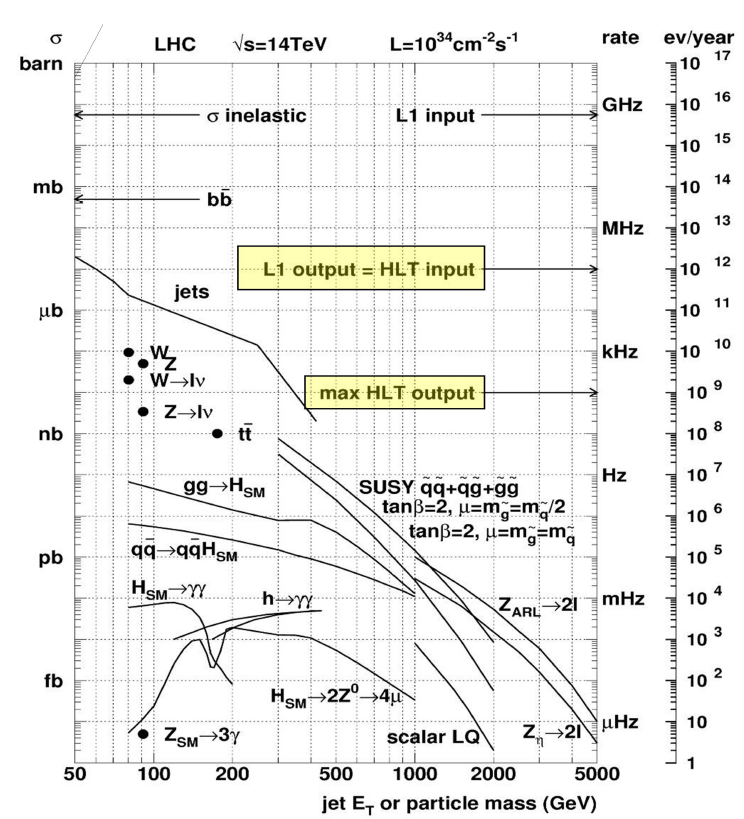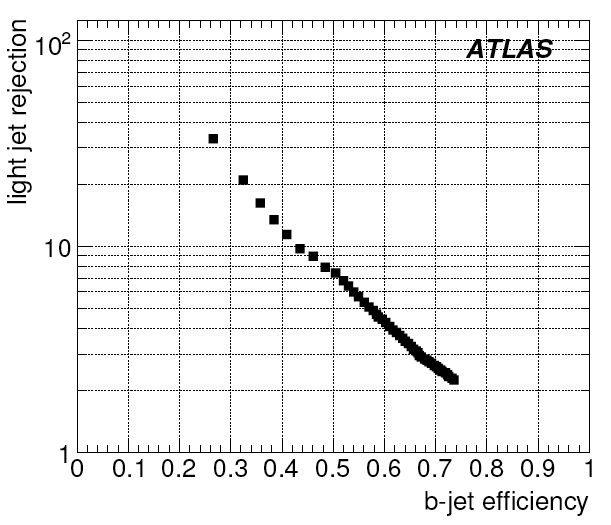b+Jet+MET topology-based physics signatures
Top quark cross section measurement in the missing ET + b-jet channel
Inclusive missing ET + multi-b search
missing ET + 4b analysis
ttH
Jet reconstruction, calibration, and resolution
Jet algorithms
Inputs to jet reconstruction: Calorimeter towers with noise suppression (TopoTowers)
Jet energy resolution improvements using tracks
Jet energy resolution improvements using longitudinal calorimeter segmentation
Jet-Vertex association algorithm
Baseline correction for pile-up and noise
Semi-leptonic b-jet energy scale
Measurement of the jet energy resolution
b-tagging
Track-jet based b-tagging
High pT b-tagging
Event Tagging
Hadronic flavor tagging
gluon bb tagging
highly boosted (bb)-jets
Quark/gluon separation
High Level Trigger b-tagging
The LHC will produce collisions at a rate of 40MHz. The purpose of the trigger system is to reduce the output event storage rate to about 300MB/s or approximately 200Hz.
Since most of the collisions at the LHC center of mass energy will result in non-interesting physics events, such QCD multi-jet production, the main task of the trigger system is to reject QCD events while mantaining high efficiency for low cross section processes like super-symmetry, Higgs, etc.
The ATLAS trigger consists of three levels: Level 1, which is hardware based, and the high level trigger (HLT) which consists of Level 2, and the Event Filter. The HLT is based on software algorithms that analyze region of interests (RoI) identified by the level 1 trigger. The output rates of the three trigger levels are 75KHZ, 2KHz, 200Hz.
Tagging b-jets at the trigger level can expand the physics reach of ATLAS in many ways: it allows to lower the jet ET threshold to increase the acceptance of interesting physics events containing multiple b-jets (like bbH and ttH ), and can be used to reduce non-b backgrounds and improve the purity of Super-symmetry searches involving b-jets in the ?nal state.
The SLAC group has implemented one of the two ATLAS b-tagging algorithms at level 2 trigger: the Impact Parameter ?2 Probability tagger (IPChi2)
Level 2 impact parameter Chi2 algorithm
The IPChi2 tagger is based on the impact parameter distribution of mis-tags, which can be derived directly from data and does not require the use of Monte Carlo templates as in the likelihood ratio b-tagger.
For every region of interest selected by the level 1 trigger, the level 2 b-tagging algorithm uses tracks reconstructed by the level 2 trigger, to determine the probability that the RoI originates form the primary vertex. b-jets are identified by chi2 probability cut.
The performance is measured as rejection as a function of efficiency. For instance, for a b-tagging efficiency of 60%, the Level 2 b-tagging algorithm rejection is 4, which means that, on average, only one out of four light quark jets will pass the selection.
b-jet trigger menu
b+MET combined trigger
The SLAC group has proposed, for the first time, a combined b-jet+MET trigger, to be used in physics signatures containing b-jets and missing ET.
The missing ET requirement provides an additional handle to reduce the output rate, while maintaining high efficiency for signal events.
We are currently studying the effect of this trigger signature in hadronic top quark final state and b+MET super-symmetry events.


